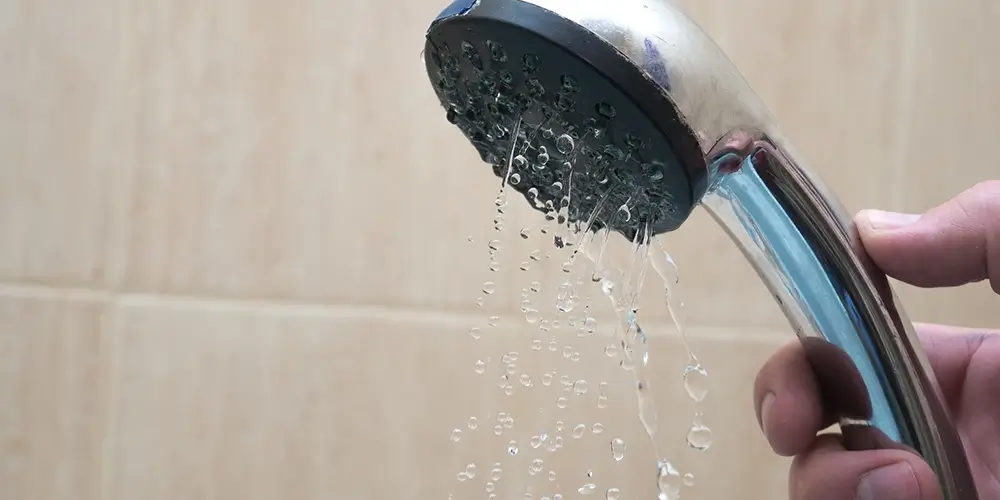It’s no secret that the average American wastes a lot of water in the bathroom. In fact, it adds up to about 17 gallons per minute in the shower alone! That might not seem like a lot per shower, but if you multiply that by minutes in your showers or baths each day, it starts to add up fast.
The good news is there are some easy ways to save water and money that you can implement today, some at absolutely no cost. Read on for some easy tips and tricks.
1. Test Your Showerhead
How much water does your shower use per minute? In the United States, gallons per minute shouldn’t exceed 2.5 GPM; otherwise, you should replace your showerhead ASAP.
Measuring the flow doesn’t require special equipment. All you need is a bucket or bowl, a measuring cup, and a timer. Sounds like a recipe, doesn’t it? A recipe for savings.
- Place the bucket under the shower head, then turn on the water and timer simultaneously (with your three hands, or as close to simultaneously as possible).
- When the timer reaches 10 seconds, turn the water off.
- Use the measuring cup to measure the water in the bucket.
- Multiply the number by 6 to get the cups per minute, and divide by 16 to determine the gallons per minute.
2. Swap Out Your Showerhead
There are two types of water-conserving showerheads:
- Aerating showerheads work by adding air to the flow of water. This mixture decreases the amount of water used and creates a gentle pressure shower.
- Non-aerating showerheads are best if you have poor water pressure. These force water through smaller openings in a conventional showerhead, delivering high-pressure showers with less water. Many non-aerating showerheads have pressure adjustment heads for variable pressure.
3. Check for Leaks
Leaks are a common cause of high water bills. Sometimes they’re obvious by the puddles on the floor or dripping from the faucet or showerhead.
Other indications can be loose or curling flooring near the shower or bath, paint peeling near it, mold spots outside the shower or bath, water stains on the shower ceiling, or chalky wood finishes.
However, not all leaks are easy to see.
- Splash Leak: Check for water splashes or puddles around sinks or tubs.
- Fixture Leak: Examine fixtures for dripping water or visible leaks.
- Other Leak: Look for damp spots on walls, ceilings, or floors not associated with fixtures. Also, pay attention to your water bill for spikes.
For hidden leaks, it’s time to hire a professional plumber.
4. Shorten Your Shower Time
Unfortunately, if you take extra-long showers, you may negate the benefits of water-conserving fixtures. Try to follow these tips.
- Turn off the water between rinsings. This is known as a navy shower, and it’s a great way to save water when you’re lathering.
- Set a timer or have a clock. You may lose yourself in the joy of showering. Setting a timer can bring you back to reality.
- Pretend you’re at the gym. People tend to take shorter showers in public showers. So surprise there, unless you enjoy being exposed in public. Pretend you’re at the gym and on your way to work (and you’re running late). No time to dilly-dally!
5. Cut Your Bath Water in Half
Do you fill your bathtub to the brim? Filling a bathtub halfway typically saves around 15 to 30 gallons of water compared to filling it all the way; plus, it prevents water from spilling over. For extra savings, you can plug the tub before you start filling it.
It can take a little time for the water to warm up, but you’re paying for that water whether you use it or not. Or you can collect the cold H2O in a bucket to water the houseplants.
Conclusion
Taking a quick shower is a small concession to Mother Nature, but if everyone in the USA shortened their showers by just two minutes, we could save over 2 billion gallons of water daily. That’s almost 9 trillion gallons of water saved each year!
Even a small change in your daily routine, like these easy to follow tips of testing your showerhead, swapping out your showerhead, checking for leaks, and shortening your showers, will conserve water and save money on your water bill.
And for professional leak detection and WaterWise fixture installation, please call us at Orange Coast Plumbing. We’re here to help!
FAQ: Saving Water in the Shower & Bath
Q: How can adjusting water temperature efficiently save water?
A: Adjust the water temperature while the shower is off to avoid water waste while finding the right temperature.
Q: Can minor repairs in the bathroom save water?
A: Fixing leaks immediately, even small drips from a showerhead, can save gallons of water daily.
Q: How does multitasking in the shower impact water usage?
A: Avoid multitasking, such as brushing teeth or shaving, while the shower runs; instead, turn off the water.
Q: Can I modify daily habits to save water in the shower?
A: Reduce the frequency of washing hair or taking long showers, and opt for shorter, more water-efficient showers when possible.
Q: Can the choice of bath products influence water usage?
A: Using quick-rinse soaps and shampoos can reduce the water to wash them off.
Q: Is taking a bath less water-efficient than showering?
A: Generally, showers are more water-efficient than baths, particularly if you limit your shower time and use a low-flow showerhead.
Q: Does the temperature of the water affect consumption?
A: Using cooler water can reduce the energy required to heat water, thus saving on water and energy bills.
Q: What role does regular maintenance play in saving water?
A: Regularly checking for and repairing leaks in tub and shower fixtures can prevent significant water waste over time.

